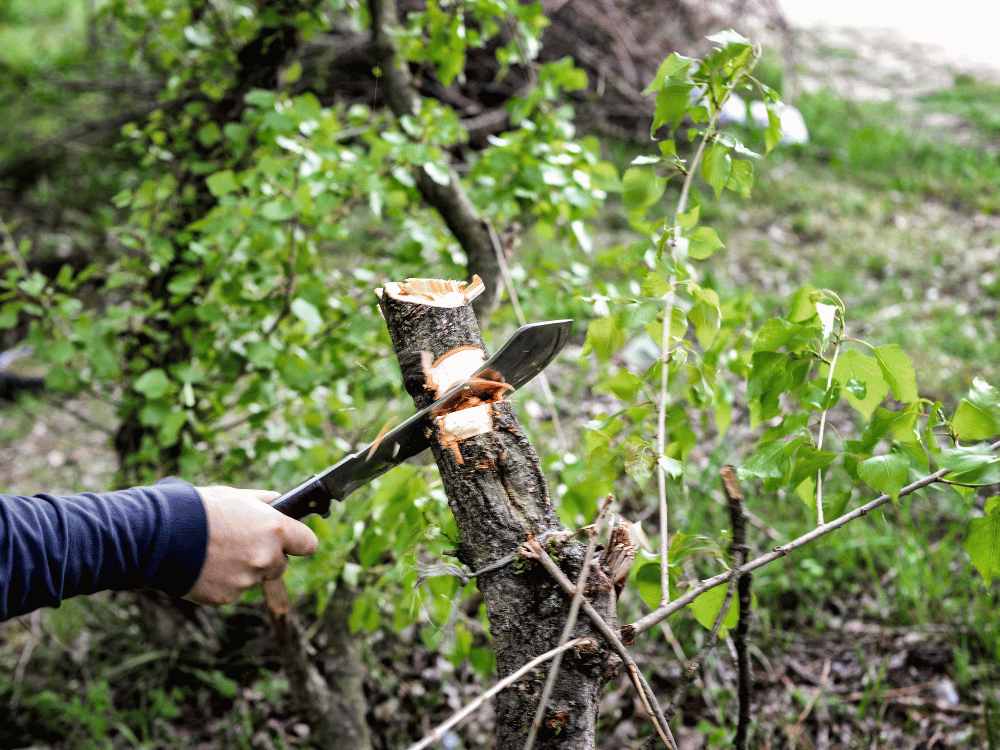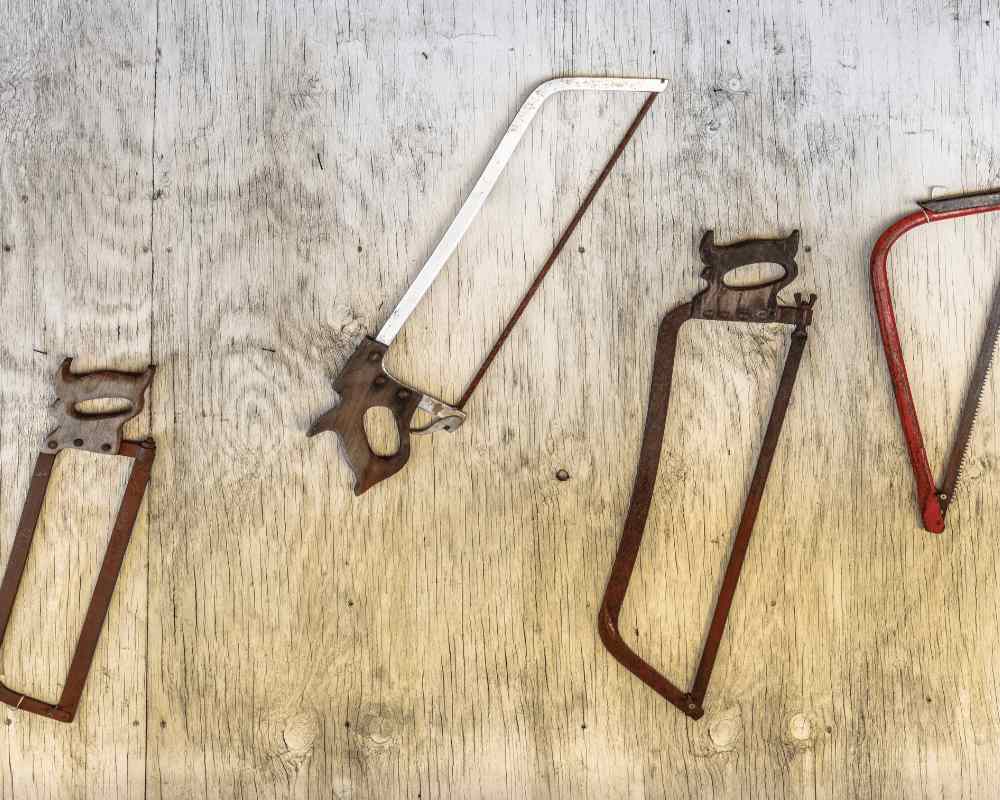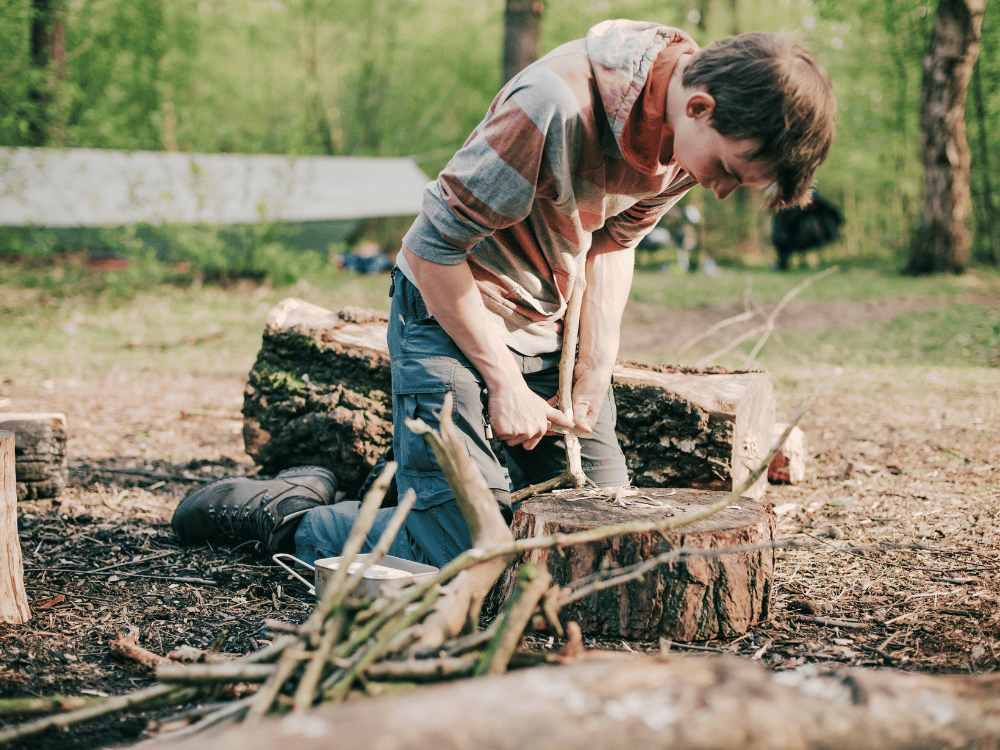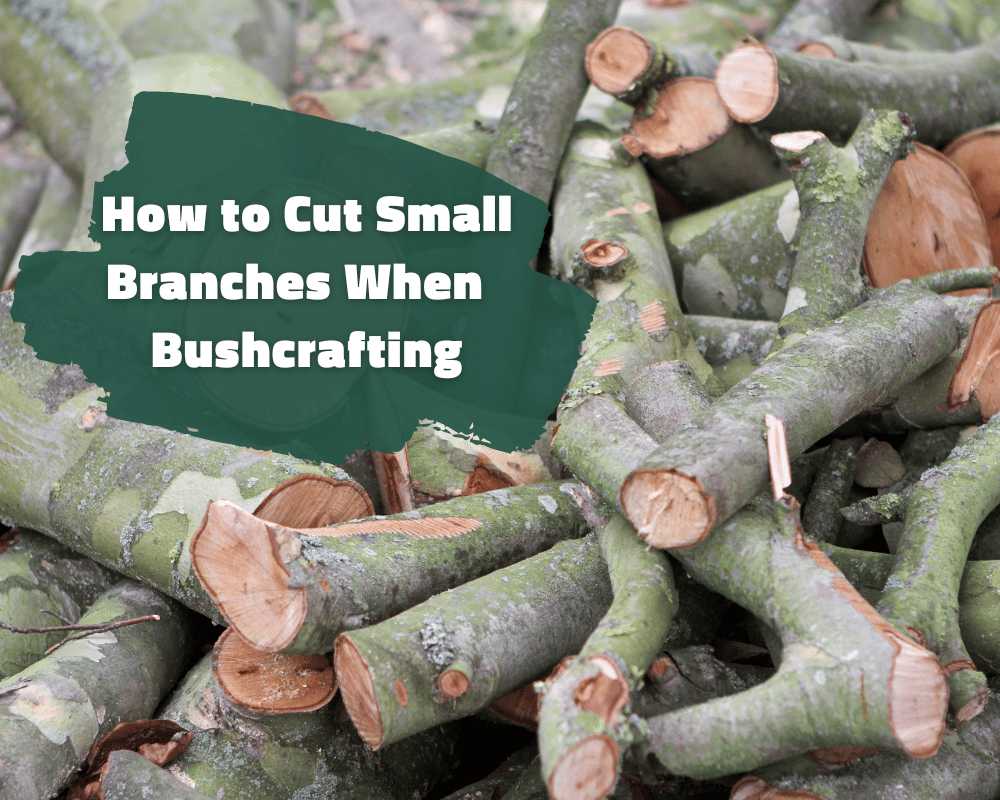During bushcraft, small branches come in handy for many different purposes, so it’s highly useful to know how to cut them properly.
Cutting small branches may sound easy, but if you want to do it safely and efficiently, you’ll need to use the right technique.
In this article, you’ll learn the techniques for cutting small branches effectively. After that, you’ll dive into the different uses of small branches in bushcraft! Let’s begin.
How to Cut Small Branches in 7 Steps
- Before you start cutting up small branches, make sure your machete or ax is sharp
- Next, stand with your legs apart, with your feet firmly on the ground and the small branch in front of you. Don’t stand too far away from, or too close to, the branch.
- Now pick up your machete, ax, or whatever other tools you’re using. Hold it with a firm grip—if you’re using a machete, hold it at the non-blade end; if you’re using an ax, hold it by the handle firmly with both hands.
- Now you’re ready to cut the small branch. You should make a 45-degree cut, doing it in such a way that your ax or machete cuts from the right-hand side of the small branch through to the centerline between your legs. While you’re doing this, remember that you don’t need a huge amount of force to cut small branches. Try not to exert too much force through your elbows; if you swing your ax or machete too hard, you may swing too far and injure yourself. Instead, you should swing with minimum speed—and only increase your force if your swings aren’t delivering hard enough blows.
- After you’ve made your first cut on the branch, make another cut at about 45 degrees to the left of the centerline. This second cut should be perpendicular to the first cut (which you made at 45 degrees to the right of the centreline). Tip: At this point, it’s good practice to check if you’ve already managed to cut your branch in two. If your branch is already cut up and you keep swinging at it, you might end up hitting something (e.g. yourself).
- Next, cut straight on the centerline of the branch. This center cut should break your small branch in two completely.
- If you need to cut several branches, repeat the process. Cut to the right, cut to the left, then cut at the center to finish off the branch. Remember that you shouldn’t put in too much elbow force or swing too hard.
How to Use a Machete to Cut Small Branches
The previous steps showed you how to cut small branches using an ax or a machete. Yet there are some faster, simpler ways of getting it done using a machete, too. This section will show you how to cut speedily and safely with a machete.

Tip: Make sure your machete is sharp enough before you get started.
- If you want to cut small branches that are already on the ground, you should spread your feet apart and swing your machete at the branches. Start with as little force as possible and only use more force if you need to.
- If you want to cut small branches that still hang on a tree, you should spread your feet apart, stand firmly on the ground, and hit the branches from the right side first. Next, hit them from the left side and after that, hit the centerline to give the finishing blow. Take extra care to do this safely and with full concentration; getting distracted might lead to accidents or injury.
- If your small branch is quite short, you can pick it up in one hand and use your other hand to cut the branch into pieces with your machete. Be careful not to swing your machete too much as you could end up cutting your leg or groin.
Tip: After you’ve finished cutting, you should store your machete in a safe place so you don’t step on it by mistake.
Cut Small Branches With a Bushcraft Hacksaw
Instead of an ax or machete, you can also cut small branches using a bushcraft hacksaw. This tool is specially designed for cutting things like small branches. Here are the steps to follow.

- As with other cutting tools, position your legs wide and firmly on the ground to maintain balance.
- Use your right hand to hold the hacksaw handle and use your left hand to hold the other part of the hacksaw in place. You can cut with one hand, but using two hands gives better balance.
- Make sure everything is steady and then proceed to cut the small branches. Move the hacksaw in a to-and-fro motion until the small branches break off. Tip: If you’re cutting a branch directly off a tree, make sure you don’t stand in the area where the branch will fall down.
- Practice makes perfect when it comes to cutting with a hacksaw, and you’ll only get better over time. Remember to store your hacksaw in a safe place once you’ve finished using it.
So, you now know how to cut small branches using an ax, machete, and a hacksaw. To wrap up, let’s look at some different purposes that you can use freshly cut small branches for.
What Are the Smaller Branches For?
Small branches are very versatile and can be used for many different purposes during bushcraft. Here are some main uses of small branches, be it for fun or for getting things done.

- Making a fire: Small branches catch fire faster than larger branches and so are great for starting a campfire.
- Defending yourself: You can use small branches to ward off passing wildlife and animals that try to attack.
- Making decorations: Why not get creative when you’re bushcrafting! Gather some small branches and use them to make a rustic basket.
- Building a fence: It’s easy to twist and resize small branches, so they’re handy for building small fences to delineate your territory in the bush.
- Walking with a stick: A small branch can serve as a fun, majestic-looking walking stick as you explore.
- Gardening: If you want to plant something, you can use small branches to create a raised bed for your plants (in hugelkultur style). A raised bed provides shelter, retains moisture, and creates a climate in which a growing seed can thrive.
…So that’s a wrap! You now know how to cut small branches using different tools: an ax, a machete, and a hacksaw. You also learned some fun and practical uses for cut-up branches—from self-defense to fence-building. So get outside, give it a try, and enjoy your time in the wild!
I am Bruno. Navigating the urban rush by day, I find peace under the stars by night. Alongside my loyal companion and co-adventurer Lilith, we explore the balance between city life and nature’s embrace. Through writing and films, I delve into bushcraft and the wild’s allure.
GointheWilderness is my bridge between these two realms, guiding you to reconnect with your innate wilderness.
Eden is here and now; join us in rediscovering it.

